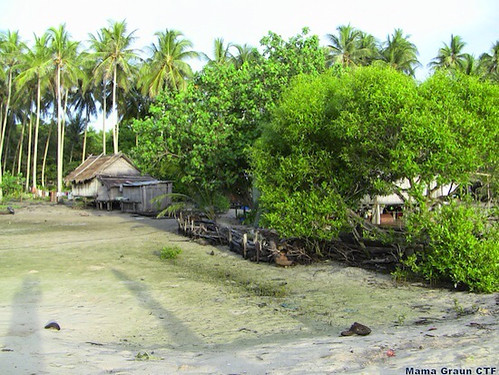In a bottom-up approach to fighting climate change, the indigenous use of mangroves is now leading local and national plans to stem the destruction of land and communities by coastal flooding and erosion.
As global warming melts ice and glaciers, small island states are the first to be threatened by thermal expansion of the world’s oceans. The Pacific Climate Change Science Programme predicts that, under a high emissions scenario, Papua New Guinea could experience a sea level rise of 4-15 cm by 2030.
The government has identified coastal flooding and malaria as the two climate change hazards expected to cause the greatest damage to land, people and infrastructure. Coastal flooding has affected 8,000 people annually over the past 15 years, and could impact 65,000 people within the next 18 years. Experts say the cost of damage from coastal flooding could increase from 20 million dollars per year to 90-100 million dollars annually by 2030, but implementation of adaptation measures may reduce losses by 65-85 percent.
Climate adaptation is not a new concept to those who have lived along the nation’s coastlines for generations. In Milne Bay and Oro Provinces on the east coast, the Maisin, Are, Doga and Dima people of Collingwood Bay have long possessed knowledge of the importance of mangrove forests to conserve coastal ecosystems.
The waterlogged trunks and roots of mangrove trees, which grow in saltwater inter-tidal areas along rivers and between land and ocean in tropical regions, consolidate sediment, thereby strengthening coastlines and protecting against flooding and erosion.
According to Mama Graun, a local conservation trust fund, 30 of the 42 mangrove species found in Papua New Guinea grow along 159.8 kilometres of Collingwood Bay’s coastline. The tropical tree system is central to the sustainable life of villages. It provides timber for building dwellings, firewood for cooking and traditional medicinal remedies, while mangrove swamps harbour marine foods, such as fish, oysters and crabs. More





